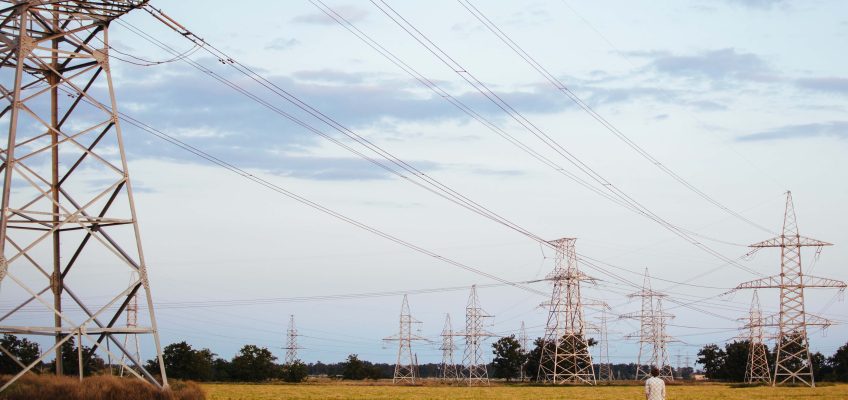Cooperative Wisdom starts with the understanding that environments, both natural and social, are always changing. The changes may be rapid and obvious; they may be slow and subtle. In both cases, Cooperative Wisdom directs us, “Be alert for opportunities and inadvertent harms.”
Participating in the Big Solar in in Ohio conference, sponsored by Green Energy Ohio, made me reflect on how much change there has been in the power grid that allows us to produce and distribute electricity. At the beginning of the 20th century, most Americans lived as people had lived for centuries—they got up at sunrise and went to bed at sunset. In between, they did hard physical work that depended almost entirely upon the energy they could generate using their in their own bodies.
The development of electrical power changed all that. In the early decades of the 20th century, large cities installed street lights and ran electric lines to businesses, shops and residences. Suddenly, the day didn’t have to end at sunset. In the 30’s, the New Deal included rural electrification, with electric lines spreading along country roads and through small towns. Soon people were able to get work done more quickly and easily because they could use machinery powered by that electricity.
Throughout most of the 20th century, people assumed that centralized generation was the most efficient way to produce electricity. Soon high voltage transmission lines lined railroad tracks and public roads across the nation. As manufacture became mechanized, electricity became its dominant power source. To this day factories consume at least a third of the energy human beings harness.
Transmission lines and factories created a very specific energy environment. Anyone in the electricity business is familiar with the dominant patterns of usage. After a nighttime lull, demand for electricity picks up sharply at 6 AM on Monday morning, peaks in the late afternoon, then continues into the evening. After 10 PM, it subsides, and then the pattern repeats through Friday, only to relax over the weekend.
Of course, every form of social organization has its drawbacks, and that’s true for centralized generation of electricity. Producing electricity in central locations creates several problems. First, electricity has to be transported to where it is needed, and energy is inevitably lost, mile by mile. Second, the efficiencies created by higher voltage transmission lines, are often lost when voltage has to be reduced so power can be distributed for local uses. And, when utilities have great discrepancies between high and low demand, they are forced to build infrastructure which is not used consistently.
In response to these problems, the energy environment is changing as people experiment with local generation of power. In New York State, for example, officials started thinking about “micro-grids” after seeing the havoc a hurricane could effect. If a county can produce and secure its own electric supply, it can keep its police, fire, hospital and emergency services functioning during a crisis.
As utilities begin to consider regional generation possibilities, many previously ignored energy sources create opportunities for the social virtue we call intentional imagination. If a town of 30,000 people generates 10 tons of food waste per week, perhaps electricity could be extracted from that food. If the town sanitizes human wastes to remove toxins, perhaps they could also extract energy and minerals from those wastes. If a local factory produces grape jelly, perhaps the grape skins could be added to grass clippings collected curbside to create a viable source of energy.
Companies have also exercised imagination in relation to those expensive fluctuations in demand. In California, Southern California Edison is one company that has created incentives for the owners of electric cars. Most people garage their cars overnight, a time when power plants are producing power that goes unused. SCE offers customers a price break if they will use that surplus energy by programming their cars to charge between 10 PM and 6 AM.
When environments change, there is always dislocation. And there’s also a temptation to lament the loss of systems that worked well in the past. Cooperative Wisdom reminds us that we can respond constructively and creatively to change only if we are proactive about looking for harms created by our current forms of organization and imaginative about finding ways to thrive in new environments.


Leave a Reply